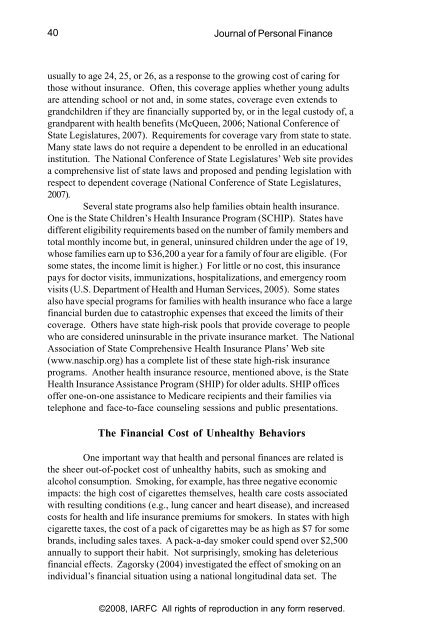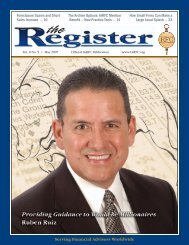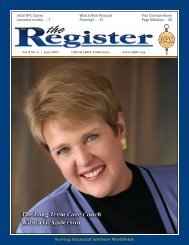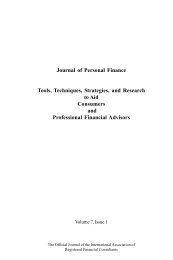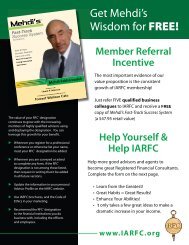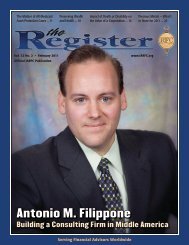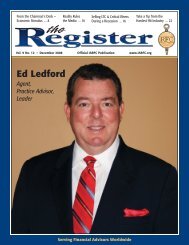3433-vol. 6 issue 2-3.pmd - iarfc
3433-vol. 6 issue 2-3.pmd - iarfc
3433-vol. 6 issue 2-3.pmd - iarfc
You also want an ePaper? Increase the reach of your titles
YUMPU automatically turns print PDFs into web optimized ePapers that Google loves.
40<br />
Journal of Personal Finance<br />
usually to age 24, 25, or 26, as a response to the growing cost of caring for<br />
those without insurance. Often, this coverage applies whether young adults<br />
are attending school or not and, in some states, coverage even extends to<br />
grandchildren if they are financially supported by, or in the legal custody of, a<br />
grandparent with health benefits (McQueen, 2006; National Conference of<br />
State Legislatures, 2007). Requirements for coverage vary from state to state.<br />
Many state laws do not require a dependent to be enrolled in an educational<br />
institution. The National Conference of State Legislatures’ Web site provides<br />
a comprehensive list of state laws and proposed and pending legislation with<br />
respect to dependent coverage (National Conference of State Legislatures,<br />
2007).<br />
Several state programs also help families obtain health insurance.<br />
One is the State Children’s Health Insurance Program (SCHIP). States have<br />
different eligibility requirements based on the number of family members and<br />
total monthly income but, in general, uninsured children under the age of 19,<br />
whose families earn up to $36,200 a year for a family of four are eligible. (For<br />
some states, the income limit is higher.) For little or no cost, this insurance<br />
pays for doctor visits, immunizations, hospitalizations, and emergency room<br />
visits (U.S. Department of Health and Human Services, 2005). Some states<br />
also have special programs for families with health insurance who face a large<br />
financial burden due to catastrophic expenses that exceed the limits of their<br />
coverage. Others have state high-risk pools that provide coverage to people<br />
who are considered uninsurable in the private insurance market. The National<br />
Association of State Comprehensive Health Insurance Plans’ Web site<br />
(www.naschip.org) has a complete list of these state high-risk insurance<br />
programs. Another health insurance resource, mentioned above, is the State<br />
Health Insurance Assistance Program (SHIP) for older adults. SHIP offices<br />
offer one-on-one assistance to Medicare recipients and their families via<br />
telephone and face-to-face counseling sessions and public presentations.<br />
The Financial Cost of Unhealthy Behaviors<br />
One important way that health and personal finances are related is<br />
the sheer out-of-pocket cost of unhealthy habits, such as smoking and<br />
alcohol consumption. Smoking, for example, has three negative economic<br />
impacts: the high cost of cigarettes themselves, health care costs associated<br />
with resulting conditions (e.g., lung cancer and heart disease), and increased<br />
costs for health and life insurance premiums for smokers. In states with high<br />
cigarette taxes, the cost of a pack of cigarettes may be as high as $7 for some<br />
brands, including sales taxes. A pack-a-day smoker could spend over $2,500<br />
annually to support their habit. Not surprisingly, smoking has deleterious<br />
financial effects. Zagorsky (2004) investigated the effect of smoking on an<br />
individual’s financial situation using a national longitudinal data set. The<br />
©2008, IARFC All rights of reproduction in any form reserved.


